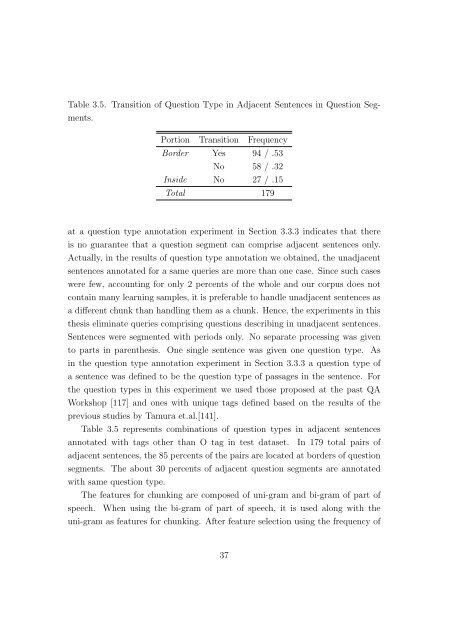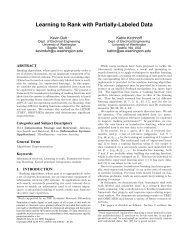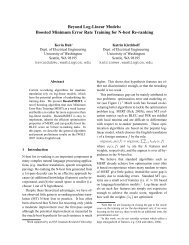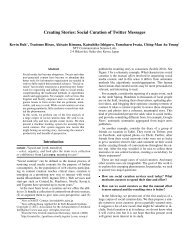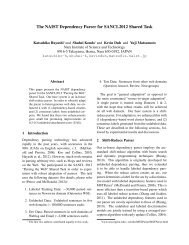file - ChaSen - 奈良先端科学技術大学院大学
file - ChaSen - 奈良先端科学技術大学院大学
file - ChaSen - 奈良先端科学技術大学院大学
- No tags were found...
Create successful ePaper yourself
Turn your PDF publications into a flip-book with our unique Google optimized e-Paper software.
Table 3.5. Transition of Question Type in Adjacent Sentences in Question Segments.Portion Transition FrequencyBorder Yes 94 / .53No 58 / .32Inside No 27 / .15Total 179at a question type annotation experiment in Section 3.3.3 indicates that thereis no guarantee that a question segment can comprise adjacent sentences only.Actually, in the results of question type annotation we obtained, the unadjacentsentences annotated for a same queries are more than one case. Since such caseswere few, accounting for only 2 percents of the whole and our corpus does notcontain many learning samples, it is preferable to handle unadjacent sentences asa different chunk than handling them as a chunk. Hence, the experiments in thisthesis eliminate queries comprising questions describing in unadjacent sentences.Sentences were segmented with periods only. No separate processing was givento parts in parenthesis. One single sentence was given one question type. Asin the question type annotation experiment in Section 3.3.3 a question type ofa sentence was defined to be the question type of passages in the sentence. Forthe question types in this experiment we used those proposed at the past QAWorkshop [117] and ones with unique tags defined based on the results of theprevious studies by Tamura et.al.[141].Table 3.5 represents combinations of question types in adjacent sentencesannotated with tags other than O tag in test dataset. In 179 total pairs ofadjacent sentences, the 85 percents of the pairs are located at borders of questionsegments. The about 30 percents of adjacent question segments are annotatedwith same question type.The features for chunking are composed of uni-gram and bi-gram of part ofspeech. When using the bi-gram of part of speech, it is used along with theuni-gram as features for chunking. After feature selection using the frequency of37


